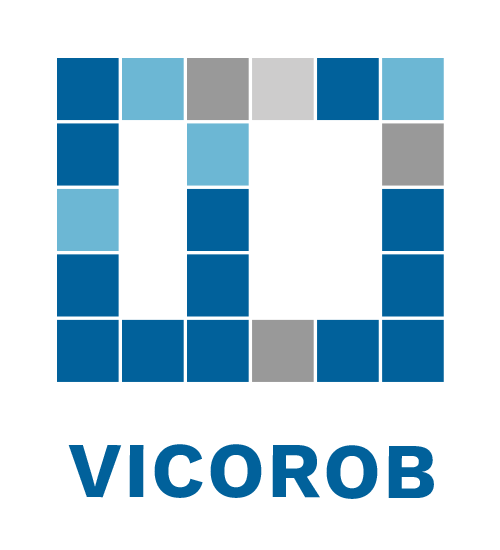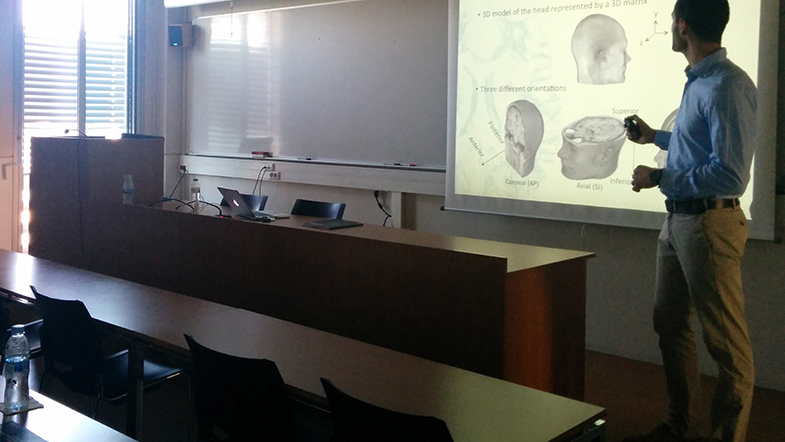Automated methods on Magnetic Resonance Brain Imaging in Multiple Sclerosis
Doctoral thesis “Automated methods on Magnetic Resonance Brain Imaging in Multiple Sclerosis”
By Eloy Roura Pérez
Supervised by Xavier Lladó Bardera , Arnau Oliver Malagelada
Abstract
Nowadays, medical imaging is one of the most important tools for doctors when studying the human body. Given the wide variety of images, the information provided, and the huge amount of research and clinical practice performed around the world, we could say that medical imaging has become a new science. The imaging techniques used depend mainly on the part of the body and the disease studied, in order to better appreciate the characteristics of the tissue. In the case of the brain, one of the techniques most widely used is the conventional and di↵usion magnetic resonance imaging (MRI), although Computed Tomography (CT) is also used. The focus of this thesis, is to study these MRI by means of computer vision, analysing and developing automated methods to assist doctors in the detection and monitoring of neurological diseases affecting the central nervous system, of which the brain is the main part. Multiple Sclerosis (MS) is a clear example of these diseases, characterised by the presence of white matter lesions (WML), which can be detected in this image modality. Lupus is also an example, in which the white matter is affected by these plaques, but usually presenting a smaller lesion burden.
Currently, doctors perform manual analyses of MRI scans, which are volumes in 3D implying a great deal of computation time. By manual analysis we mean carrying out the detection and segmentation of WML. The quantification of these WML is crucial for the diagnosis of MS and is also an important predictor in Lupus. This task is performed repeatedly by different radiologists who provide a subjective description, always within some limits and following specific criteria. This fact introduces a high variability that negatively a↵ects the results, especially in longitudinal studies, where even a single radiologist can have di↵erent opinions in different time points. This subjectivity difficulties to develop automatic algorithms as the definition of what is correct is inherently unclear.
First of all, in this thesis, we have focused on the image pre-processing in order to enhance the image information. The main aspects of this enhancement rely on removing any image noise and correcting any intensity bias induced by the scanner. Also, as isolating the brain region from the whole image is a key step in the pre-processing, this technique is known as ”skull-stripping”. On this last point, we have contributed a new technique based on a multispectral, adaptive, region growing algorithm, which enhances the current state-of-the-art on the brain segmentation process.
We include, as a pre-processing step, the image registration process, which is a key step in order to using complementary information from di↵erent modalities as well as comparing different subjects. In this thesis we also propose a novel pipeline to carry out the registration process by using information from multiple modalities to improve the results of this registration process.
Furthermore, we have also studied the current techniques for the detection and segmentation of WML, proposing a new method based on a previous proposal. This approach uses two image modalities, one to obtain tissue information that will be used to detect the lesions in the other. Finally, we have achieved an automated and user-friendly tool with comparable, or even better, results in some cases than the state-of-the-art.
As a result of this thesis, we present on the one hand a new approach for brain segmentation from an MRI and another approach for registering various MRI modalities in the same space. On the other hand, we present a tool able to automatically detect and segment WML. This tool is publicly available and designed to operate under the SPM platform commonly used in hospitals due to its easy user interaction. This tool has been developed on the basis of a thorough analysis of the state-of-the-art of the di↵erent techniques involved.


No Comment